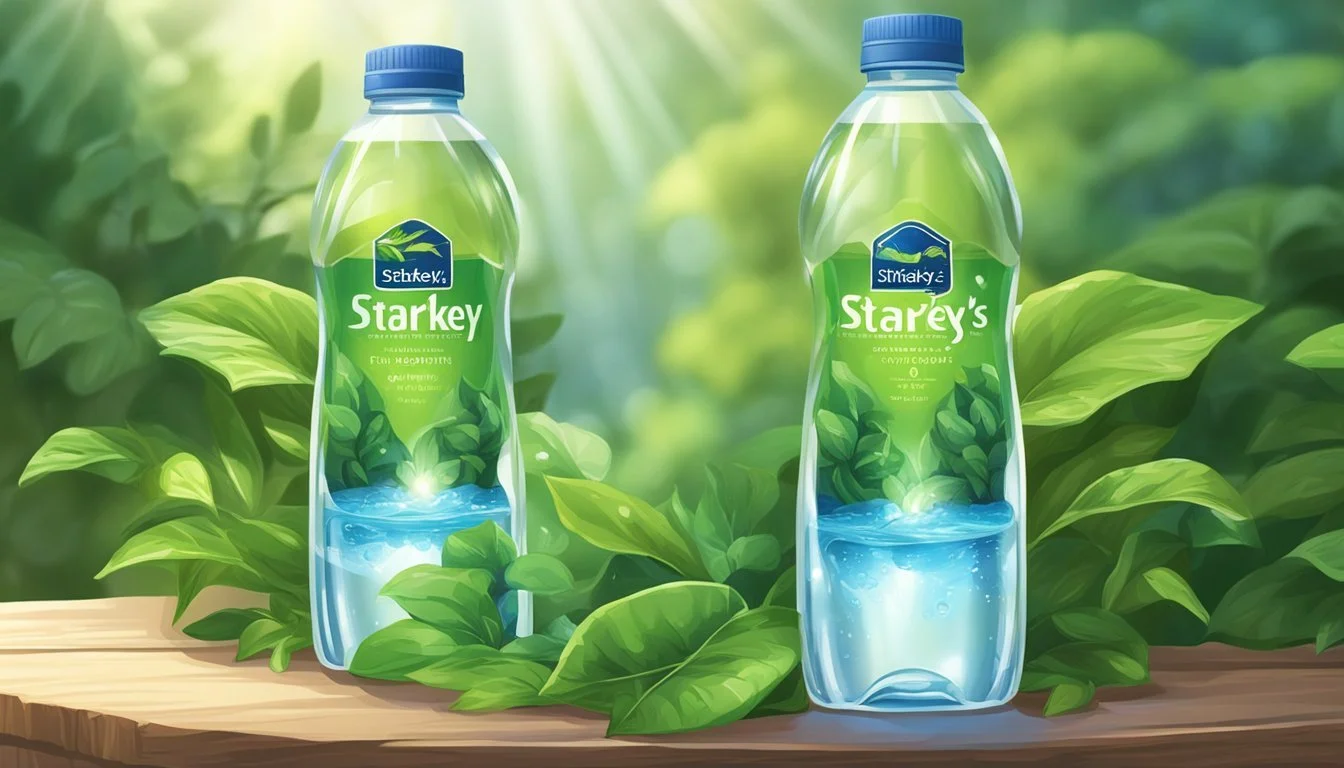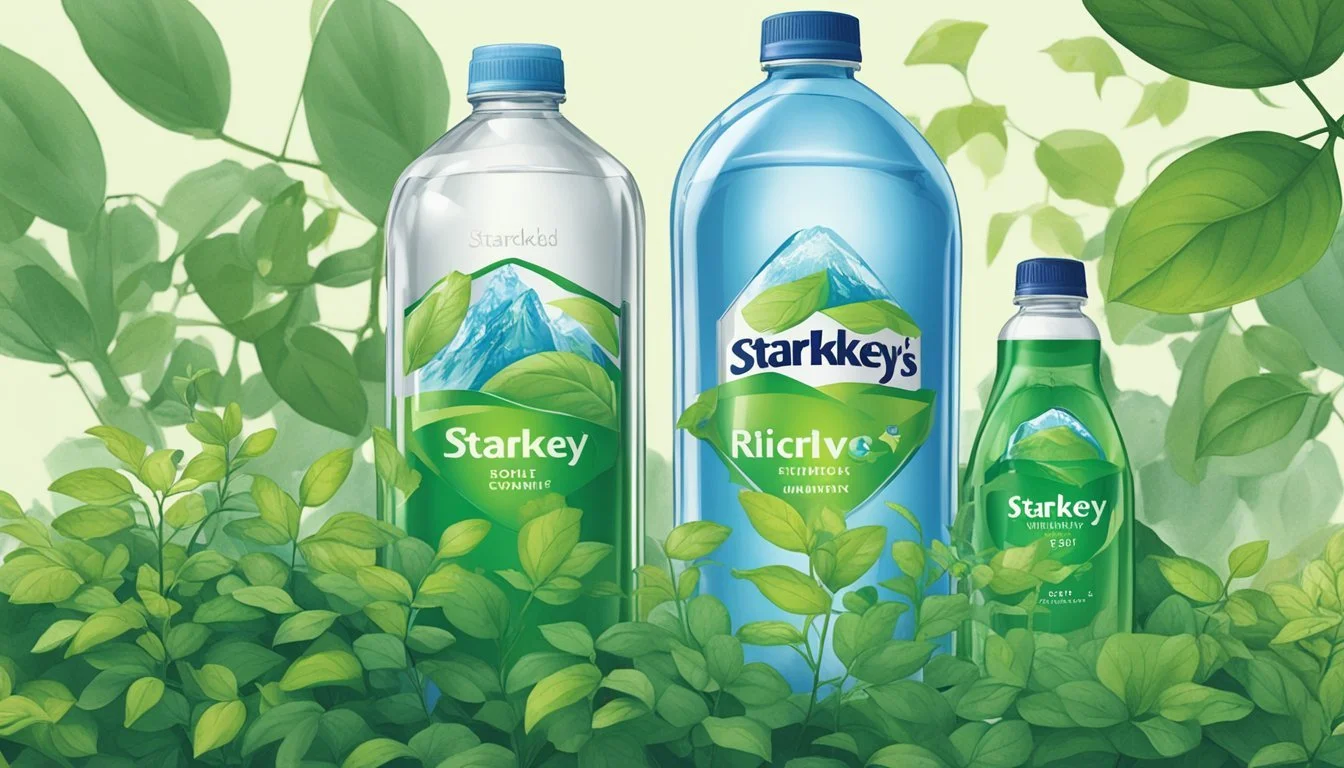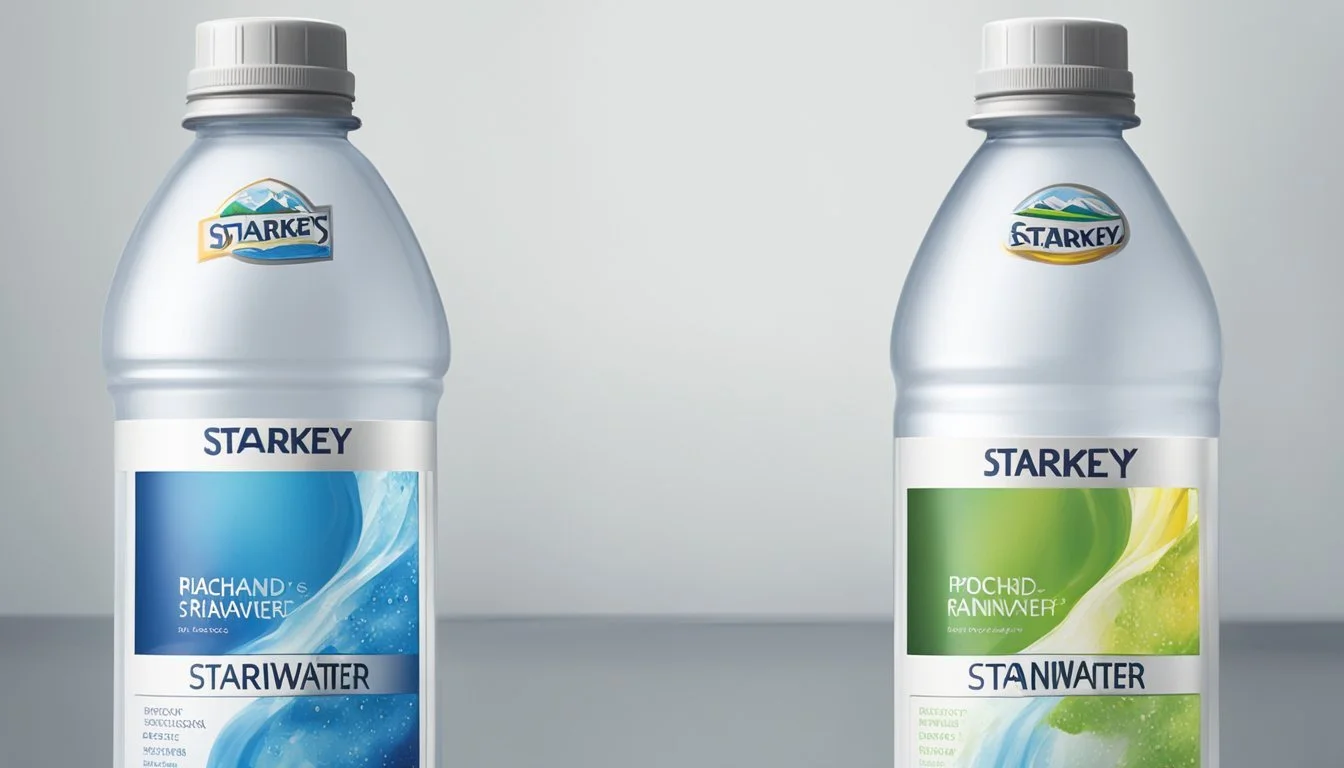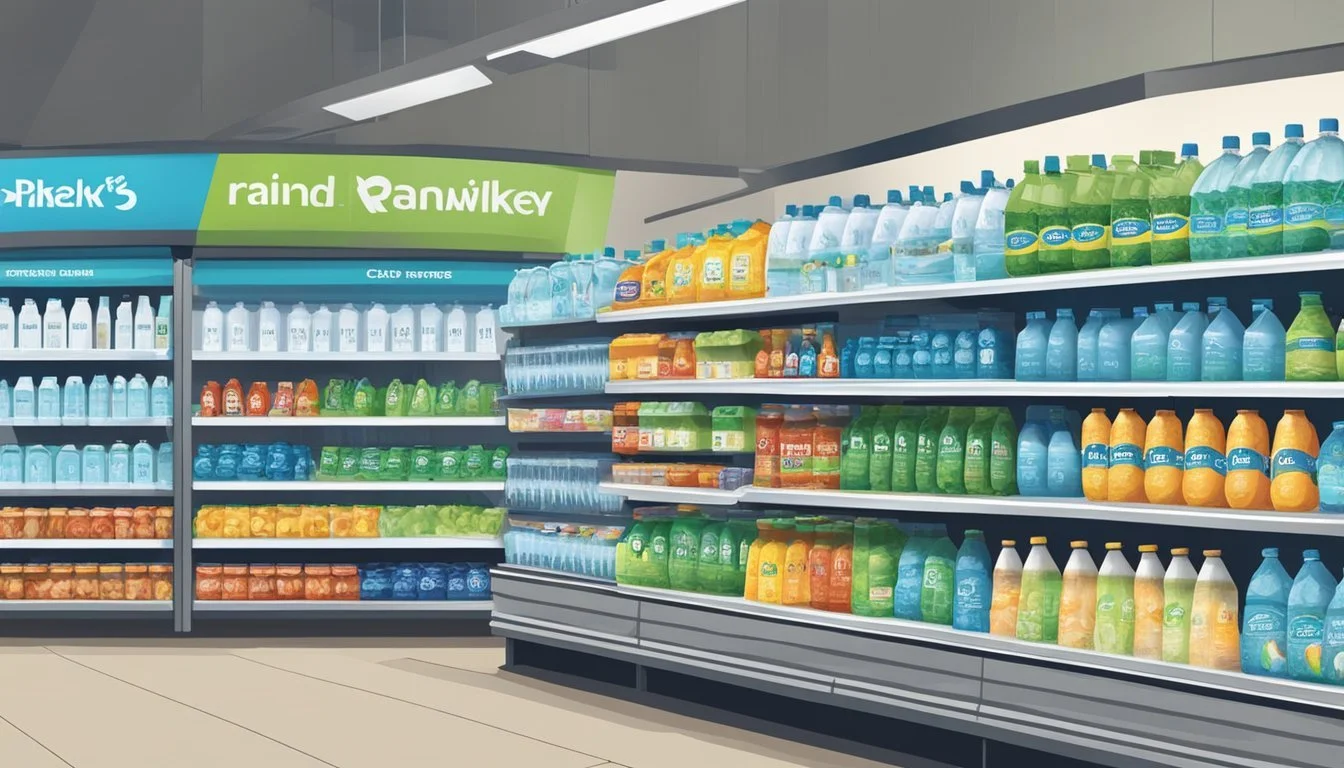Starkey vs. Richard’s Rainwater
A Comprehensive Comparison
Choosing the best bottled water can be challenging given the multitude of options available on the market. Two popular choices that stand out among consumers are Starkey and Richard’s Rainwater. Starkey, known for its high-quality, naturally alkaline spring water, is often favored for its pure taste and mineral-rich content.
Richard’s Rainwater, on the other hand, offers a unique take by bottling water harvested directly from rainfall, filtered through a zero-waste, chlorine-free system. This eco-friendly approach has garnered attention for its sustainability and commitment to clean, potable water. For those prioritizing both taste and environmental impact, Richard’s Rainwater emerges as a compelling choice.
In comparing these two leading brands, it’s essential to consider various factors such as taste, mineral content, and ecological footprint. Each brand has its distinctive strengths, catering to different consumer preferences and values.
Origin and Source
Starkey and Richard’s Rainwater are both unique in their sourcing methods. Starkey draws its water from natural springs, while Richard’s collects rainwater from select sites.
Starkey Spring Water
Starkey Spring Water originates from a geothermal spring located in Idaho. It is known for being bottled directly at the source, ensuring minimal human contact and preserving its natural mineral content.
The spring is underground, providing naturally filtered water through layers of rock, which enhances its purity and mineral richness. Starkey sources water from groundwater that has been in the aquifer for thousands of years, ensuring a consistent mineral profile.
Richard's Rainwater Collection Sites
Richard’s Rainwater takes a distinctly different approach, relying on harvested rainwater. This water is collected directly from rain in places like Texas and Kiln, Mississippi. The collection process involves capturing rain before it hits the ground, ensuring a fresh and clean source.
The rainwater is filtered and purified using advanced technology, resulting in a pure, eco-friendly product. Richard’s also emphasizes sustainability, collecting water that bypasses the traditional groundwater route, which can be more prone to contamination.
Water Purification and Quality
Starkey and Richard’s Rainwater employ distinct methods to ensure the purity and quality of their bottled water. These differences highlight their unique approaches to filtration, quality control, and the presence of minerals and fluoride.
Filtration and Purification Process
Starkey uses a rigorous filtration process that includes multi-stage reverse osmosis to remove impurities. They also employ various water softening techniques to achieve a high level of purity.
Richard’s Rainwater relies on collecting rainwater and utilizing a sequence of filtration systems. This includes initial screening, advanced filtration, and ultraviolet light for purification, ensuring the water remains pure and free from contaminants.
Both brands emphasize minimal use of chemicals like chlorine during purification, aiming to provide clean and natural-tasting water.
Quality Control Measures
Quality control is crucial for both Starkey and Richard’s Rainwater. Starkey conducts regular testing to check for contaminants and ensure compliance with health standards.
They also monitor the mineral content closely to maintain consistency across their products.
Richard’s Rainwater focuses on adhering to federal and state regulations. They maintain stringent quality checks at every stage of the filtration process to ensure that the water meets safety standards. Regular microbial testing and system audits are integral to their quality control practices.
Fluoride and Mineral Content
Starkey’s water naturally contains various minerals, which contribute to its distinct taste. However, they ensure the fluoride levels remain within safe limits as per regulatory guidelines.
This is often appreciated by consumers who prefer mineral water for its potential health benefits.
Richard’s Rainwater, being primarily sourced from rain, generally has a lower mineral content. Their focus is on providing pure and minimally processed water. They do not add fluoride to their water, making it an option for those who wish to avoid it.
Both brands offer unique benefits through their water's composition, catering to different consumer preferences for mineral and fluoride content.
Packaging and Sustainability
Starkey and Richard’s Rainwater differ in packaging choices and their commitment to sustainability. These factors significantly impact their carbon footprints and appeal to environmentally conscious consumers.
Bottle Material and Environmental Impact
Starkey primarily utilizes plastic bottles for their packaging. While convenient and lightweight, plastic has a significant environmental impact, contributing to pollution and requiring resources for production and recycling.
In contrast, Richard’s Rainwater employs recyclable aluminum cans and glass bottles. Aluminum cans are highly recyclable and maintain quality during the recycling process. Glass bottles, though heavier, are often preferred for their ability to be reused and recycled without losing quality.
Materials Environmental Impact Plastic Bottles High: Pollution, Resource-Intensive Aluminum Cans Moderate: Recyclable, Efficient Recycling Glass Bottles Moderate: Reusable, High-Quality Recycling
Renewable and Sustainable Practices
Starkey has made strides in sustainability, although its reliance on plastic can diminish these efforts. They have introduced initiatives to reduce their carbon footprint through energy-efficient processes and recycling programs.
Richard’s Rainwater, on the other hand, emphasizes its net-positive approach, collecting rainwater which replenishes natural water sources. They aim for a zero-waste philosophy, aspiring to eliminate conventional packaging eventually. Their innovative practices, such as promoting refillable dispensers, cater to a growing demand for renewable and sustainable solutions.
The focus on environmentally friendly packaging and renewable practices sets Richard’s Rainwater apart in their mission to create a more sustainable bottled water industry.
Product Range
Examining the product range of Starkey and Richard’s Rainwater, the focus will be on the variety of water types and packaging options each brand offers.
Variety of Water Types
Starkey provides still water sourced from a geothermal spring in Idaho. Known for its naturally alkaline properties, Starkey lacks a sparkling option, focusing on pure still water experiences.
Richard’s Rainwater, on the other hand, offers both still and sparkling options. Sourced from rainwater and purified, their variety is designed to cater to different tastes. The sparkling option adds a refreshing twist, making it versatile for various occasions.
Packaging Options
Packaging plays a significant role in the identity of both brands.
Starkey water is primarily available in glass bottles, emphasizing a premium and eco-friendly image. The choice of glass packaging ensures the water maintains its purity and taste without any chemical interference.
Conversely, Richard’s Rainwater utilizes glass bottles, plastic bottles, and aluminum cans. This diverse packaging strategy not only caters to different consumer preferences but also underscores the brand's commitment to sustainability. The use of aluminum cans, in particular, highlights their push towards environmentally friendly packaging options.
Starkey's focus on glass bottles positions it as a more premium choice, while Richard’s Rainwater offers flexibility with multiple packaging options to appeal to a broader audience.
Taste and Purity
Starkey and Richard’s Rainwater are both known for their unique tastes and high levels of purity. In this section, we compare their flavor profiles and see how they stack up against other popular bottled water brands.
The Flavor Profile
Starkey: Starkey bottled water boasts a neutral, clean taste with a slight hint of mineral content. It is drawn from a geothermal spring in Idaho, which contributes to its smooth and refreshing flavor. Starkey’s profile is minimalistic, catering to those who prefer a pure, unadulterated water experience.
Richard's Rainwater: Richard’s Rainwater, harvested from rain, offers a crisp and light taste. This water is often described as having a fresher, more natural flavor without any mineral aftertaste. Its process of collecting and purifying rainwater gives it an airy, refreshing profile ideal for those seeking a cleaner taste.
Comparison with Other Bottled Waters
When compared to Fiji and Evian, Starkey and Richard’s Rainwater have distinct differences. Fiji is known for its soft, smooth taste due to the presence of silica, while Evian provides a slightly heavier, mineral-rich experience sourced from the French Alps.
Acqua Panna offers a light and velvety flavor, in contrast to Starkey’s more neutral profile. San Pellegrino, being a sparkling water, doesn't directly compare but offers a lively, bubbly experience with bold mineral notes. Path and Richard’s Rainwater share a focus on environmental sustainability but differ in taste, with Path often described as having a stronger mineral flavor.
When it comes to purity, both Starkey and Richard’s Rainwater rank high. Starkey’s geothermal spring source and Richard’s innovative rainwater collection method ensure their purity stands out among competitors.
Distribution and Accessibility
Richard's Rainwater and Starkey are both available across various retail and online channels. Each brand has distinct distribution strategies, impacting their accessibility to different communities and customers.
Retail and Grocery Store Presence
Richard's Rainwater has a notable presence in Whole Foods and other health-focused grocery stores. The company emphasizes sustainable living, which aligns with the values of these retailers. This focus on environmentally conscious consumers enables Richard’s Rainwater to stand out in a competitive market.
Starkey, sourced from Starkey Spring in Idaho, similarly places its products in Whole Foods and other major grocery stores. Its distribution strategy aims to attract consumers looking for high-quality spring water. Starkey’s presence in larger retail chains also boosts its visibility and availability.
Both brands are concentrated in health and natural food stores, but customers can often find Starkey in a wider variety of traditional supermarkets as well. This broader retail approach helps Starkey reach more diverse consumer bases.
Online and Local Sales Channels
Richard's Rainwater extends its reach through a strong online presence. Customers can purchase their products directly from the company’s website, which offers bulk ordering options and subscription models. E-commerce platforms, such as Amazon, further augment Richard’s Rainwater's accessibility, making it easier for consumers to order from nearly any location.
Starkey’s distribution includes a robust online model as well. They leverage their presence on platforms like Amazon and other third-party e-commerce sites. Starkey also partners with local delivery services in key markets, ensuring faster and more reliable delivery options for customers.
Additionally, both brands participate in local community events and festivals, selling directly to consumers. This helps build brand loyalty and awareness within local communities, creating a more personal connection with their customer base.
Brand Presence and Marketing Strategies
Both Starkey and Richard’s Rainwater utilize distinct marketing strategies that contribute to their brand presence in the competitive bottled water market.
Collaborations and Partnerships
Richard's Rainwater has forged several strategic partnerships to enhance its market presence. Notably, their collaborations with Faubourg Brewing Co. and Lazy Magnolia provide a unique edge, allowing them to tap into established networks and wider distribution channels.
Starting in Austin, Texas, Richard's Rainwater leverages local partnerships to boost its regional presence before scaling nationally. These connections help the brand emphasize its eco-friendly and rain-harvesting ethos, differentiating it from competitors.
Starkey, originating from Oregon, partners with wellness retreats and luxury resorts to position itself as a premium choice. By associating with high-end establishments, Starkey reinforces its high-quality image, targeting discerning consumers who value pristine water sources.
Marketing Campaigns and Messaging
Richard's Rainwater employs a distinct approach, focusing on its unique rain-harvesting process. The brand emphasizes sustainability, highlighting its zero-waste, chlorine-free filtration system. This resonates with eco-conscious consumers and supports their brand story of turning raindrops into clean, drinkable water.
Their Tank Town initiative showcases their commitment to sustainability. Through engaging community events and informative campaigns, they educate consumers about rainwater harvesting and its benefits, building an authentic and compelling brand narrative.
Starkey focuses on purity and natural origins in its marketing campaigns. They frequently highlight the natural springs in Oregon as their water source, appealing to consumers seeking purity and mineral-rich water. Their campaigns are designed to evoke images of untouched natural landscapes, emphasizing the pristine quality of their bottled water, which attracts health-conscious and premium-market consumers.
Regulations and Certifications
Both Starkey and Richard’s Rainwater adhere to stringent regulations to ensure their bottled water is safe and pure. These standards affect their filtration, purification methods, and overall water quality.
Compliance with Health Guidelines
Starkey's Compliance: Starkey complies with local and international health guidelines, including FDA standards. The company uses advanced filtration to remove impurities and conducts regular quality checks to maintain clean water standards.
Richard's Rainwater's Compliance: Richard's Rainwater is notable for its minimal processing, as its rainwater collection methods result in naturally clean water. The company meets or exceeds bottled water regulations with rigorous testing to ensure the absence of contaminants like chlorine and fluoride.
By focusing on stringent health guidelines and effective purification methods, both brands underscore their commitment to providing high-quality bottled water.
Economic and Community Impact
Both Starkey and Richard’s Rainwater make significant contributions to local communities and economies, with distinct approaches to sustainability and employment.
Employment and Local Economies
Richard’s Rainwater supports local economies by prioritizing operations in regions with ample rainfall, which helps reduce costs and boost efficiency. Employment opportunities arise from the need for specialized skills in water collection and filtration. The firm has also seen job creation in areas such as bottling and distribution.
Starkey, on the other hand, sources its water from natural springs. This process involves different skill sets, primarily in natural resource management. Starkey's operations bring economic benefits to regions where springs are located, generating employment in extraction, quality control, and logistics.
Environmental Contribution
Richard’s Rainwater emphasizes sustainability by using a proprietary zero-waste, chlorine-free filtration system. It collects and filters rainwater, making significantly more water available for drinking compared to conventional methods. This process has reduced the community's dependence on municipal water supplies.
Starkey focuses on sustainable spring water extraction practices. However, spring water extraction may cause more disruption to local ecosystems compared to rainwater harvesting. Despite this, Starkey invests in conservation efforts to mitigate its environmental footprint and maintain the natural landscape around its spring sources.
Consumer Experience and Feedback
Consumers often look at several factors such as taste, packaging, and value for money when deciding between bottled water brands like Starkey and Richard’s Rainwater.
Reviews and Consumer Ratings
Starkey Water has received praise for its crisp and clean taste. Many consumers appreciate its high mineral content, which enhances the taste profile. However, a few have raised concerns about the slightly higher price point.
Richard’s Rainwater stands out for its unique source — harvested rainwater. Reviews highlight the refreshing and pure taste, with many commending its commitment to sustainability. However, some consumers find the flavor to be less distinct compared to mineral-enhanced waters.
Both brands maintain high standards of quality and hygiene, ensuring that consumers receive safe and clean drinking water. This focus on quality is reflected in the generally positive feedback they garner.
More About Starkey
Icelandic Glacial vs Starkey: Which Bottled Water is Better?
Mountain Valley Spring Water vs Starkey: Which Bottled Water is Better?
Starkey vs Kirkland Signature: Which Bottled Water is Better?
Starkey vs Whole Foods Italian Still Mineral water: Which Bottled Water is Better?









